Contact Details

Tungaloy has unveiled AH6225 PVD grade insert for machining ISO-M stainless steels.
AH6225 significantly expands the application coverage from continuous to interrupted cuts in a broad range of cutting speeds, while maintaining outstanding tool life and reliability in stainless steel turning.
A thick titanium-rich PVD coating with excellent thermal stability has been developed specifically for AH62225. This coating effectively prevents crater wear from developing on the insert rake surface. The grade’s top layer incorporates the latest titanium-rich nano-multilayer structure; its high-density crystal orientation enhances the grade’s hardness for superior wear resistance.
AH6225 also features a dedicated carbide substrate that excels in fracture toughness and thermal conductivity. Improved heat dissipation performance on the cutting edge prevents plastic deformation of the substrate due to thermal stress.
Machinability of stainless steels varies enormously from grade to grade depending on alloy elements, hardness, and manufacturing processes, which significantly influences insert life performance. To address this challenge, AH6225 incorporates the combined dedicated substrate development and the latest coating technology. The new versatile grade provides maximum reliability across a vast range of stainless steel turning applications from finishing to roughing and from continuous to interrupted cuts in all speed ranges, while ensuring long tool life and predictable wear pattern.
Related Glossary Terms
- fracture toughness
fracture toughness
Critical value (KIC) of stress intensity. A material property.
- hardness
hardness
Hardness is a measure of the resistance of a material to surface indentation or abrasion. There is no absolute scale for hardness. In order to express hardness quantitatively, each type of test has its own scale, which defines hardness. Indentation hardness obtained through static methods is measured by Brinell, Rockwell, Vickers and Knoop tests. Hardness without indentation is measured by a dynamic method, known as the Scleroscope test.
- machinability
machinability
The relative ease of machining metals and alloys.
- physical vapor deposition ( PVD)
physical vapor deposition ( PVD)
Tool-coating process performed at low temperature (500° C), compared to chemical vapor deposition (1,000° C). Employs electric field to generate necessary heat for depositing coating on a tool’s surface. See CVD, chemical vapor deposition.
- plastic deformation
plastic deformation
Permanent (inelastic) distortion of metals under applied stresses that strain the material beyond its elastic limit.
- rake
rake
Angle of inclination between the face of the cutting tool and the workpiece. If the face of the tool lies in a plane through the axis of the workpiece, the tool is said to have a neutral, or zero, rake. If the inclination of the tool face makes the cutting edge more acute than when the rake angle is zero, the rake is positive. If the inclination of the tool face makes the cutting edge less acute or more blunt than when the rake angle is zero, the rake is negative.
- stainless steels
stainless steels
Stainless steels possess high strength, heat resistance, excellent workability and erosion resistance. Four general classes have been developed to cover a range of mechanical and physical properties for particular applications. The four classes are: the austenitic types of the chromium-nickel-manganese 200 series and the chromium-nickel 300 series; the martensitic types of the chromium, hardenable 400 series; the chromium, nonhardenable 400-series ferritic types; and the precipitation-hardening type of chromium-nickel alloys with additional elements that are hardenable by solution treating and aging.
- turning
turning
Workpiece is held in a chuck, mounted on a face plate or secured between centers and rotated while a cutting tool, normally a single-point tool, is fed into it along its periphery or across its end or face. Takes the form of straight turning (cutting along the periphery of the workpiece); taper turning (creating a taper); step turning (turning different-size diameters on the same work); chamfering (beveling an edge or shoulder); facing (cutting on an end); turning threads (usually external but can be internal); roughing (high-volume metal removal); and finishing (final light cuts). Performed on lathes, turning centers, chucking machines, automatic screw machines and similar machines.
- wear resistance
wear resistance
Ability of the tool to withstand stresses that cause it to wear during cutting; an attribute linked to alloy composition, base material, thermal conditions, type of tooling and operation and other variables.






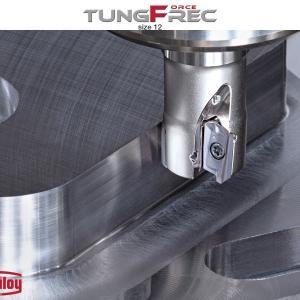
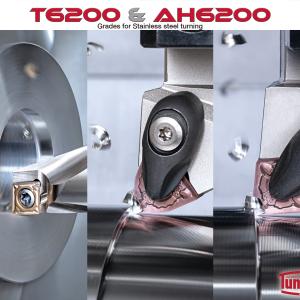
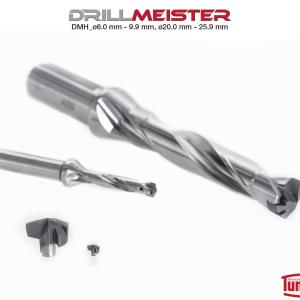
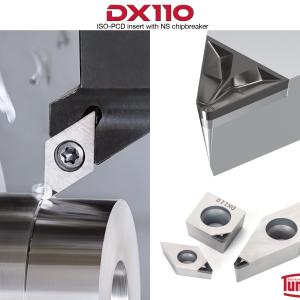
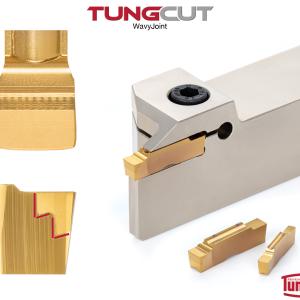
 PRODUCTS
PRODUCTS

